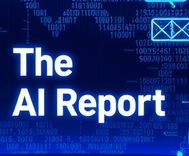Commercialization of medical artificial intelligence technologies: challenges and opportunities

The AI Report
Daily AI, ML, LLM and agents news
Unlocking Medical AI's Full Potential: Beyond the Algorithm
Artificial intelligence is poised to revolutionize healthcare, yet countless innovative AI algorithms never reach widespread clinical adoption. The path from groundbreaking research to impactful patient care demands more than just technical accuracy; it requires a robust commercialization strategy encompassing funding, regulatory compliance, health technology assessment, reimbursement, and seamless integration into clinical guidelines.
AI's Immediate Impact: Revolutionizing AAA Screening
Consider the profound implications for conditions like Abdominal Aortic Aneurysm (AAA). These vascular diseases, affecting over 200 million globally, can lead to fatal ruptures if undetected. Traditional screening is hampered by a shortage of trained ultrasound technicians.
A recent breakthrough by Chiu and colleagues (2024) offers a solution: an AI tool that enables nurses, even without prior ultrasound training, to diagnose AAA with exceptional accuracy (100% sensitivity, 97.8% specificity). This AI provides real-time guidance for probe placement and automates aortic diameter measurement, allowing rapid screenings (avg. 37 seconds) comparable to trained physicians. This innovation can significantly expand AAA screening, especially in underserved regions, preventing ruptures and saving lives.
Keys to Successful Medical AI Commercialization
While the AAA screening AI holds immense promise, its journey to broad adoption highlights common challenges. Valuable lessons can be drawn from successful ventures, such as a prominent US company specializing in AI for neurological, cardiovascular, and oncologic care. This company has developed multiple FDA-cleared AI algorithms for medical imaging analysis, generating substantial revenue.
Their success stems from several critical factors:
- Multidisciplinary Collaboration: Integrating clinicians and engineers to develop robust, clinically relevant AI, validated through peer-reviewed publications.
- Proactive Regulatory Strategy: Embedding market and regulatory considerations (e.g., ISO certifications) from the outset, streamlining FDA clearance.
- Clear Value Proposition: Demonstrating tangible economic and clinical benefits through health technology assessments (e.g., $11M/year savings in stroke detection), crucial for securing significant investment.
- Persistent Reimbursement Efforts: Actively working with payers (like US Centers for Medicare and Medicaid Services) to establish new billing codes and secure coverage, a complex process requiring long-term engagement and collaboration.
With over 1000 AI medical devices already FDA-approved, the precedent for commercialization is clear, but demands a holistic, long-term strategic vision.
Navigating the Commercialization Maze: Barriers and Solutions
Investment and Funding
A significant funding gap often exists between algorithm validation and large-scale deployment. Private investors seek compelling narratives of health system value and revenue potential. For niche markets like AAA, emphasizing broader cost savings (e.g., preventing emergency surgeries) and the technology's adaptability to other vascular conditions is crucial. Health Technology Assessment (HTA) is key to systematically demonstrating cost-effectiveness and value to health systems.
Regulatory Approval
Obtaining regulatory approval is essential, yet complex due to varying international regulations. In the US, FDA clearance (often via the 510(k) pathway) requires demonstrating substantial equivalence to existing devices. Adhering to Good Machine Learning Practice (GMLP) from conception, maintaining thorough documentation, and leveraging early FDA Q-Submission consultations are vital for success.
Reimbursement Pathways
Achieving financial sustainability hinges on reimbursement, but most AI tools lack dedicated billing codes. This necessitates tireless engagement with public and private insurers, clinicians, and professional organizations to establish new pathways. It's a multi-year, complex process where persistence and strategic collaboration are non-negotiable.
Integration into Clinical Practice Guidelines
Clinical guideline integration legitimizes AI tools and drives their adoption. Developers must actively engage with guideline committees, presenting robust evidence of efficacy and value. Addressing discordant guidelines (e.g., for AAA screening) can demonstrate how AI can reduce costs and increase efficiency, leading to broader recommendations and wider clinical use across specialties.
Conclusion: A Strategic Imperative for AI in Healthcare
Medical AI holds immense promise, but its true impact depends on effective commercialization strategies. Beyond algorithmic accuracy, the journey requires a proactive approach to investment, strict regulatory adherence, diligent efforts to secure reimbursement, and persistent engagement for guideline integration. With many AI innovations still confined to research, it's imperative for AI scientists and healthcare innovators to prioritize the infrastructure and strategic foresight for successful, impactful deployment. Let's build AI tools for real-world clinical change.

The AI Report
Author bio: Daily AI, ML, LLM and agents news
